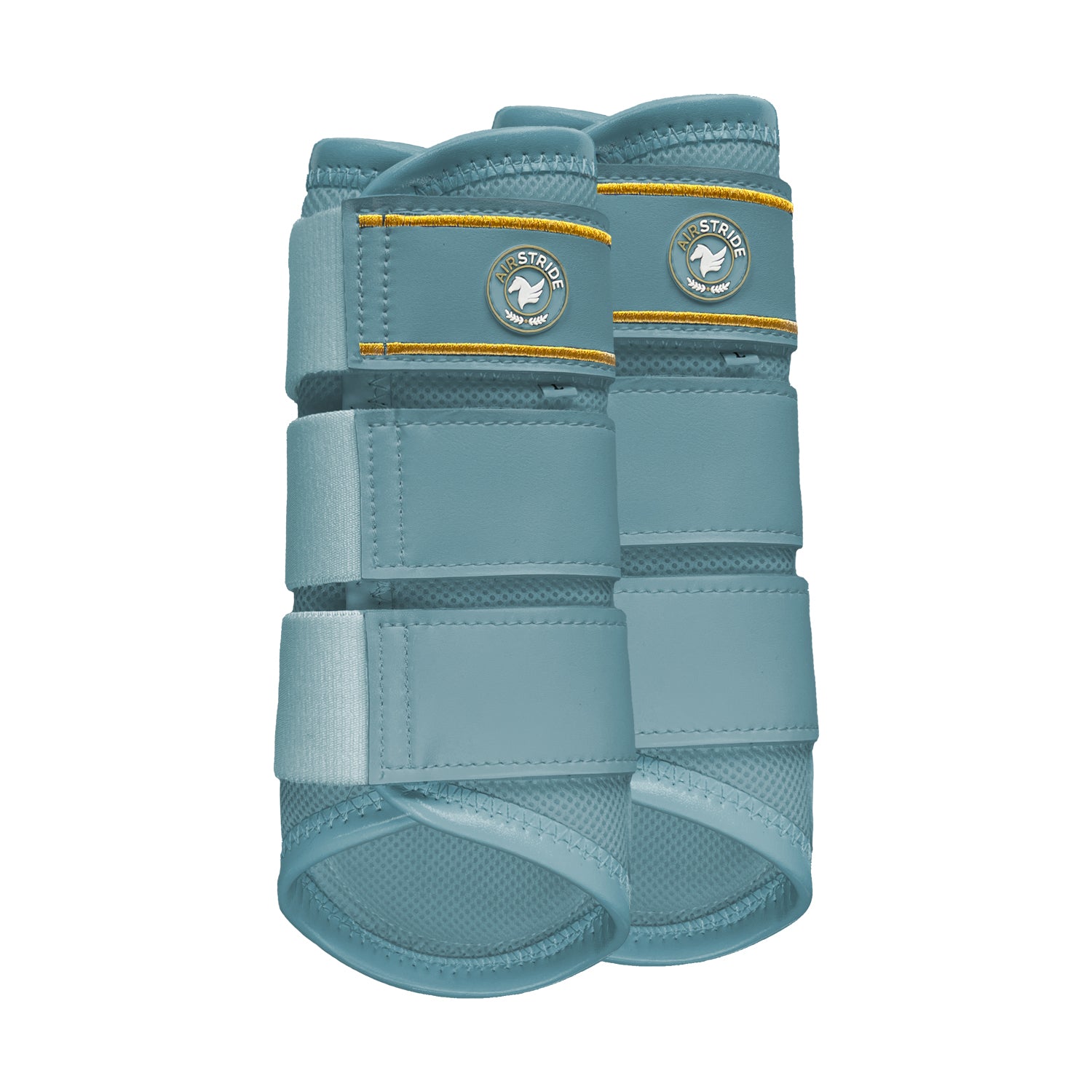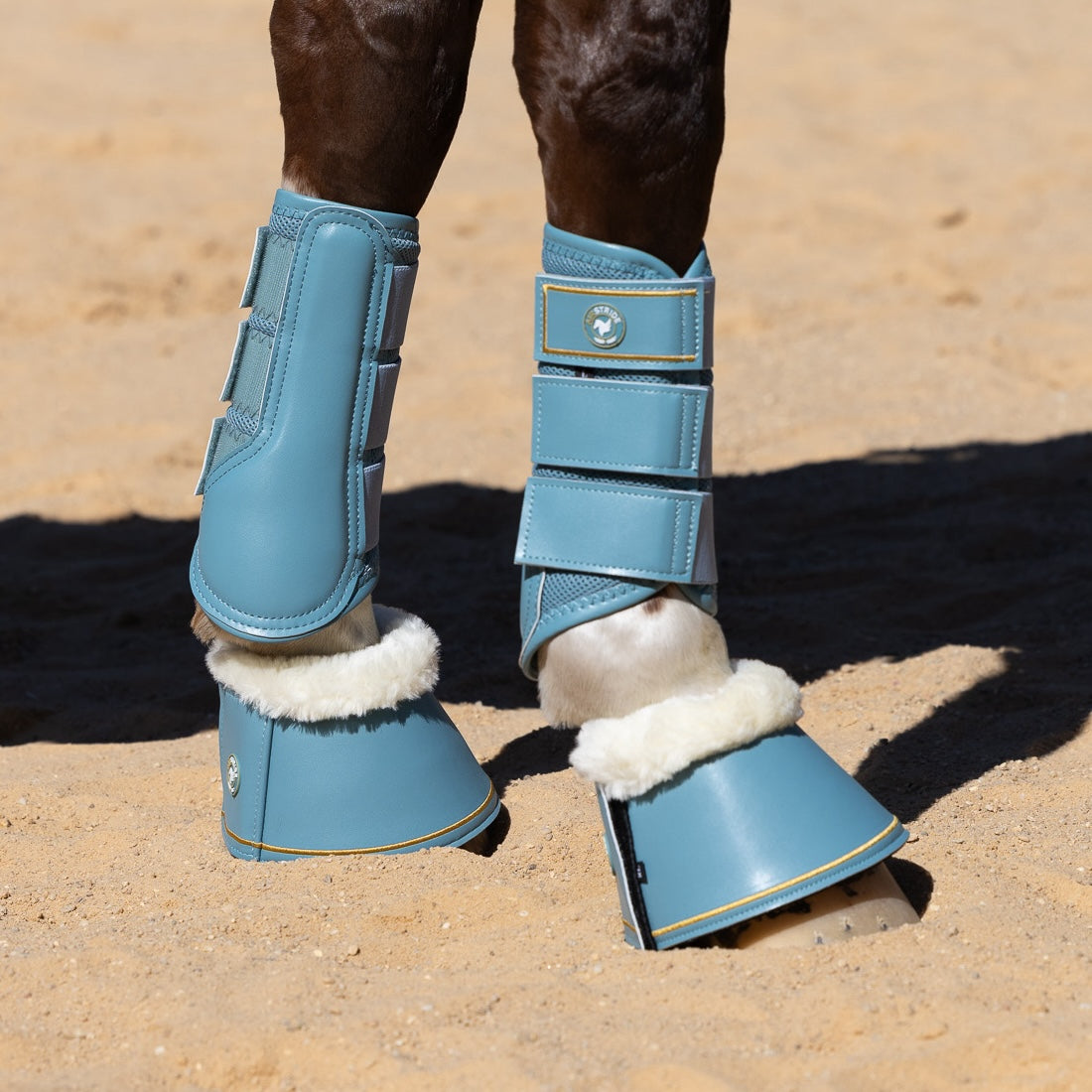AIRSTRIDE® 2025 STUDY
BREATHABILITY TESTED: AIRSTRIDE® COMPARED TO OTHER "BREATHABLE" BOOTS
In September 2025 Airstride® conducted a structured study measuring heat buildup in equine limbs using temperature sensors, and documented consistent results. The study followed a defined methodology, and findings are supported by objective data that is currently under professional veterinary review for validation.
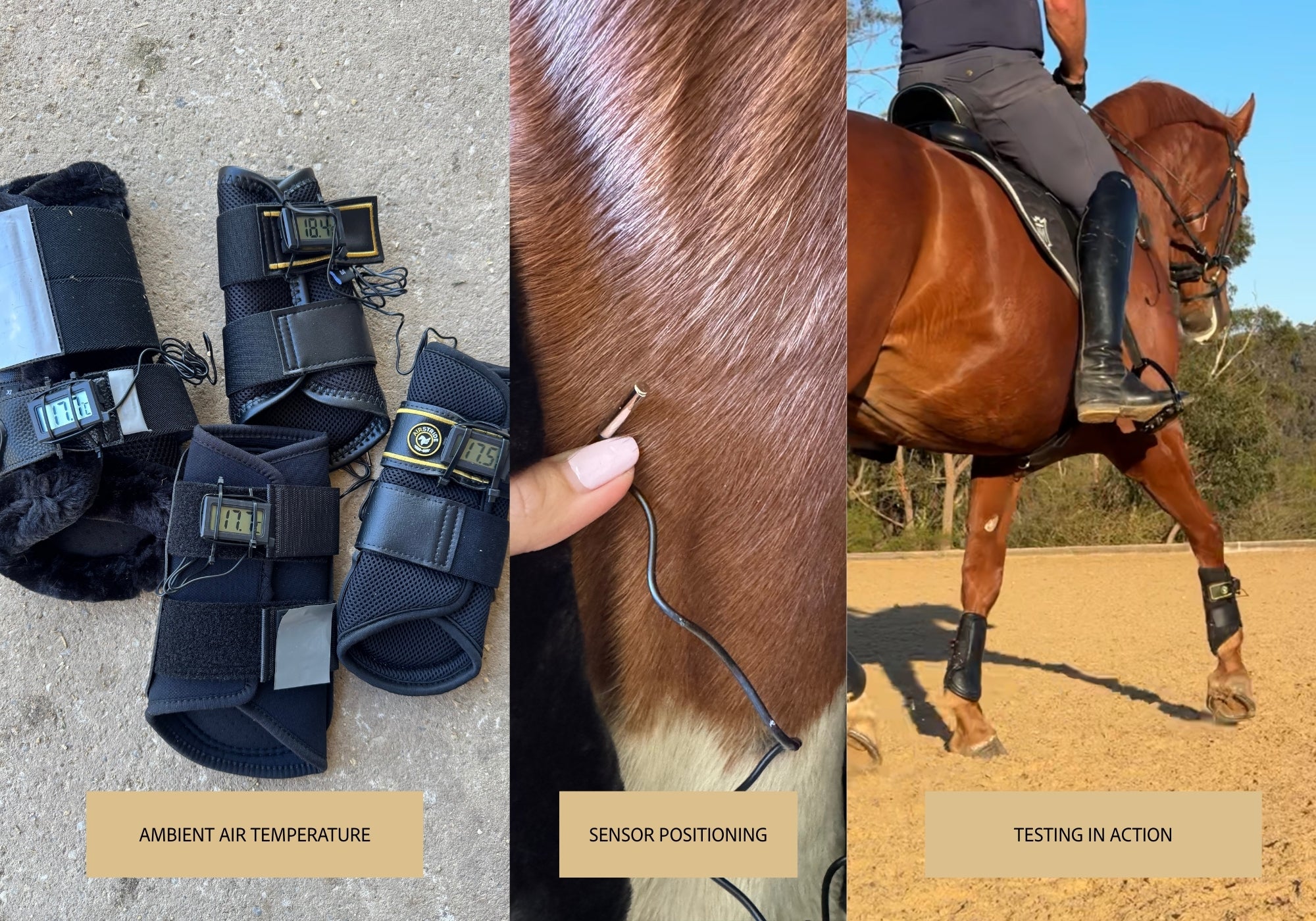
PERFORMING RESEARCH
CONDUCTING THE STUDY
The objective of this study was to compare the thermal regulation and airflow properties of Airstride® boots against two commercially popular equine leg boots that advertise breathability & breathable construction.
A structured methodology was applied, including defined controls, standardised measurements, and the use of professional grade surface temperature sensors.
OVERVIEW
AMBIENT AIR TEMPERATURE
At the commencement of testing, each temperature gauge displayed a slightly different baseline reading, averaging 18 °C (64.4°F). All sensors were securely attached using the same materials to ensure consistency.
SENSOR POSITIONING AND CONSISTENCY
Temperature sensors were positioned horizontally across the region of the Superficial Digital Flexor Tendon (SDFT), Deep Digital Flexor Tendon (DDFT), and Suspensory Ligament. This placement ensured measurements were taken from comparable anatomical sites on each limb.
To avoid external bias, all boots tested were the same colour, preventing variation caused by differences in solar absorption (as lighter colours absorb less heat than darker ones).
METHODOLOGY
Boots were applied to the horse inside the stable for 10 minutes, allowing sensors to equalise with the ambient temperature of the horse’s lower leg.
Initial recordings were taken with the horse at rest.
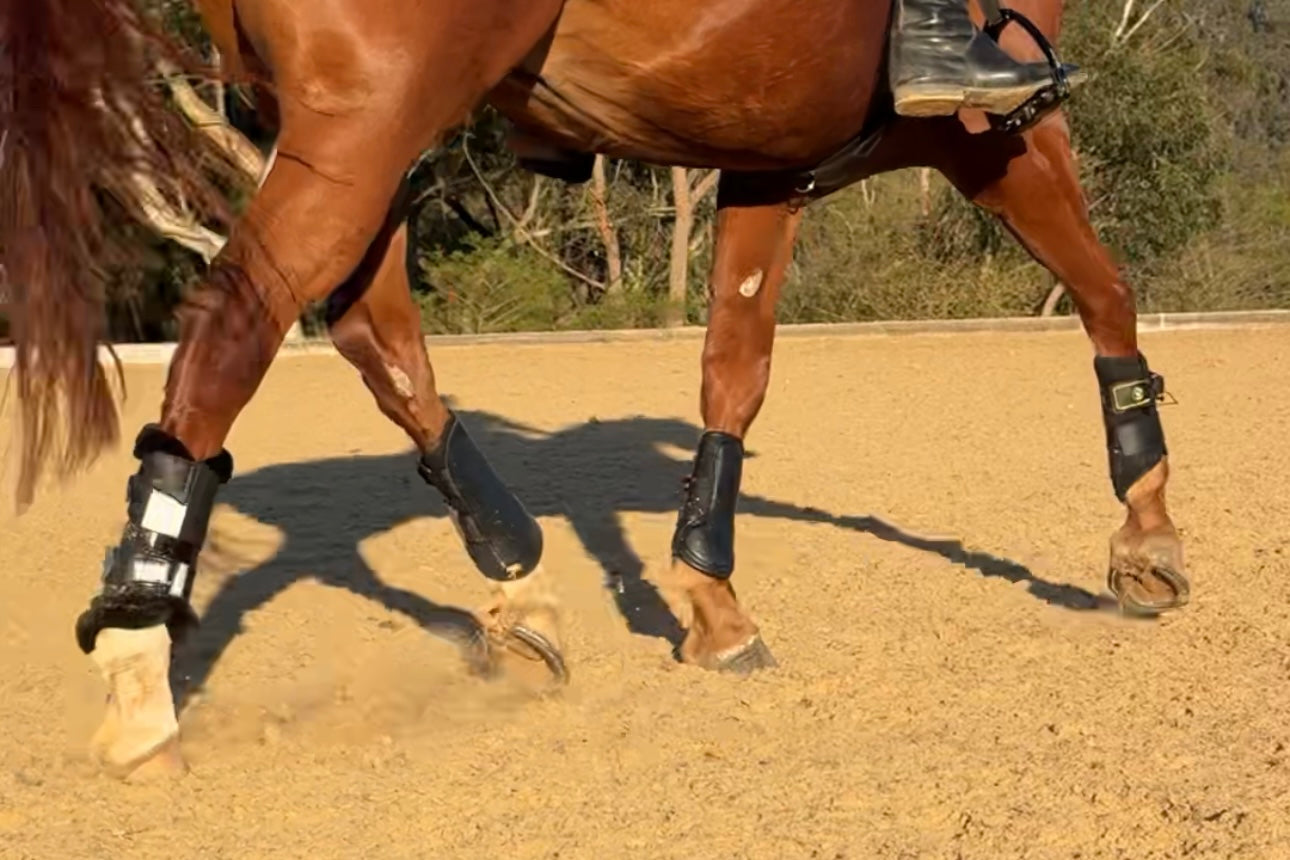
INITIAL TEMPERATURES AT REST
After 10 minutes of equalising with ambient temperature of horses lower leg.
When interpreting surface temperature data, it’s important to account for the starting ambient conditions. In our study, boots were applied at an ambient stable temperature of approx 18 °C (64°F). Naturally, the exposed skin of the lower limb equalises rapidly with the surrounding environment when uncovered. Once a boot is fitted, skin temperature begins to climb toward its physiological baseline, driven by circulatory warming from deeper tissues.
Independent thermographic studies confirm that equine skin temperatures typically stabilise in the 28–34 °C (82°F-93°F) range at rest, even when ambient conditions are considerably cooler (Westermann et al. 2014; Solheim et al. 2017).
Our observation of a rise from 18°C (64°F) to near 30 °C (86°F) under the boot aligns precisely with this well-documented equilibration effect. Importantly, this stabilisation reflects a normal physiological response rather than a harmful heat build-up, and sits well below core body temperature (37.5–38.5 °C / 99.5°F-101.3°F)
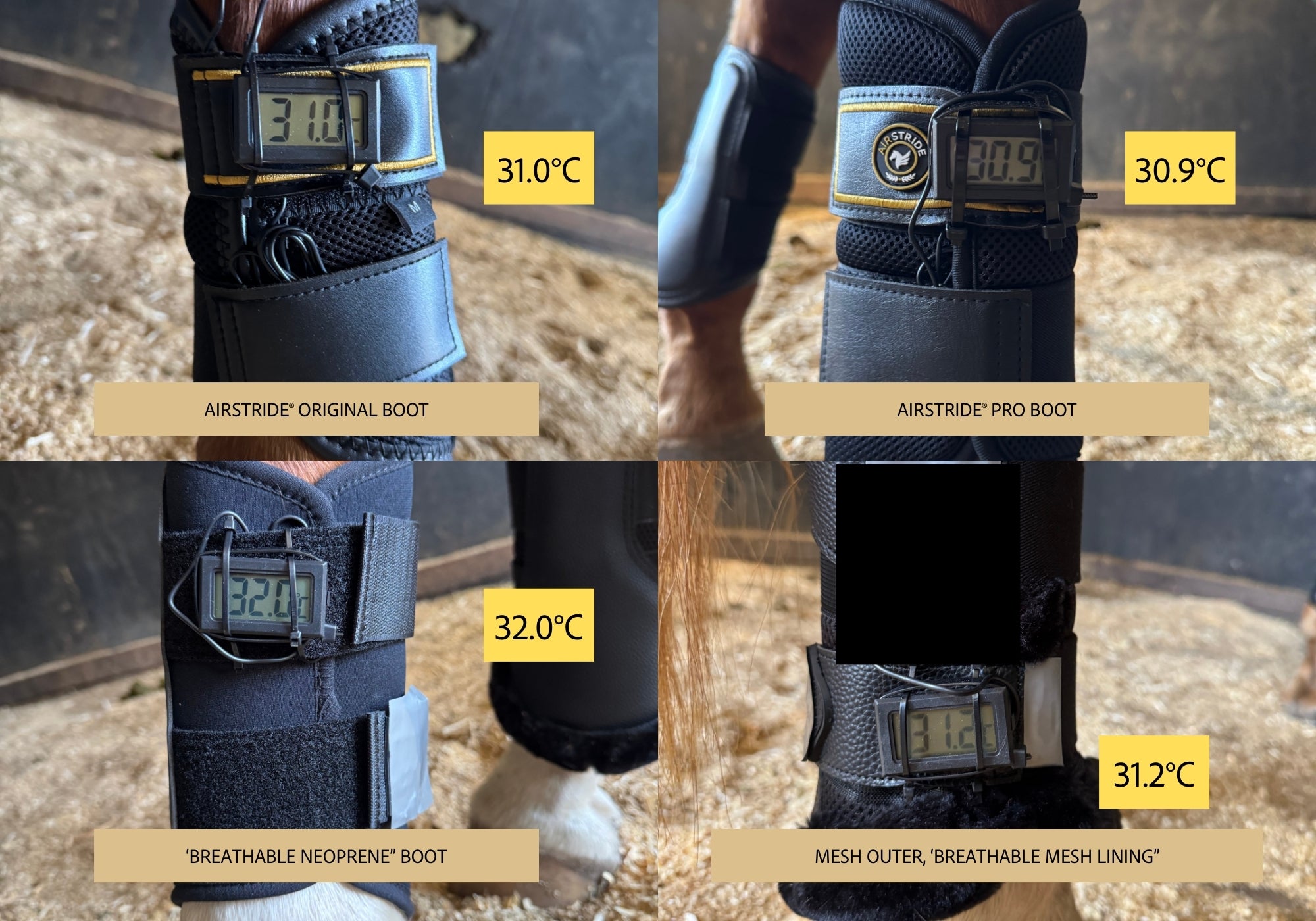
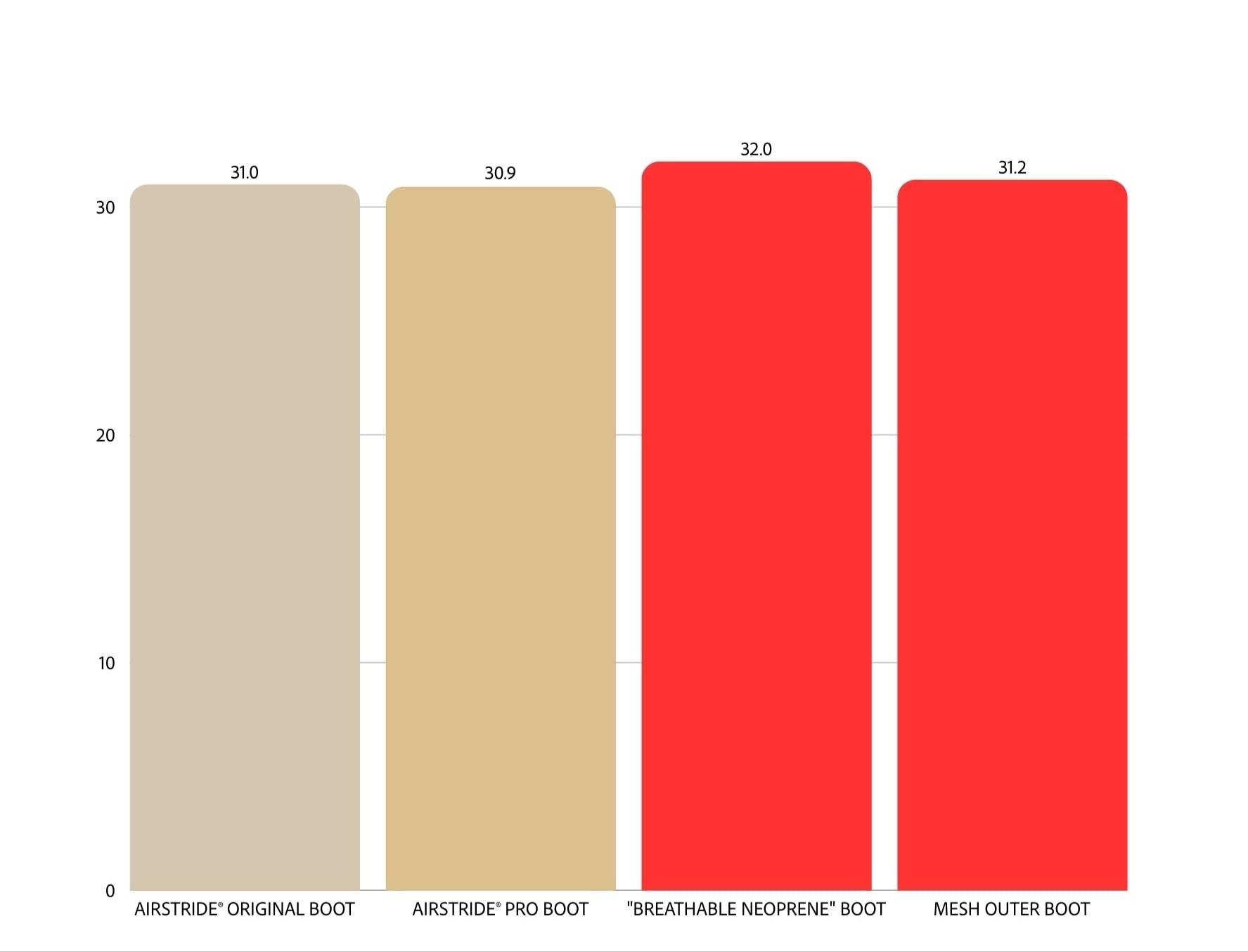
TEMPERATURES AFTER 30 MINUTES EXERCISE
The horse was then ridden in the arena by a Professional FEI rider for 30 minutes at walk, trot, and canter.
Following exercise, the horse was cooled out at walk for 5 minutes, immediately after which recordings were taken.
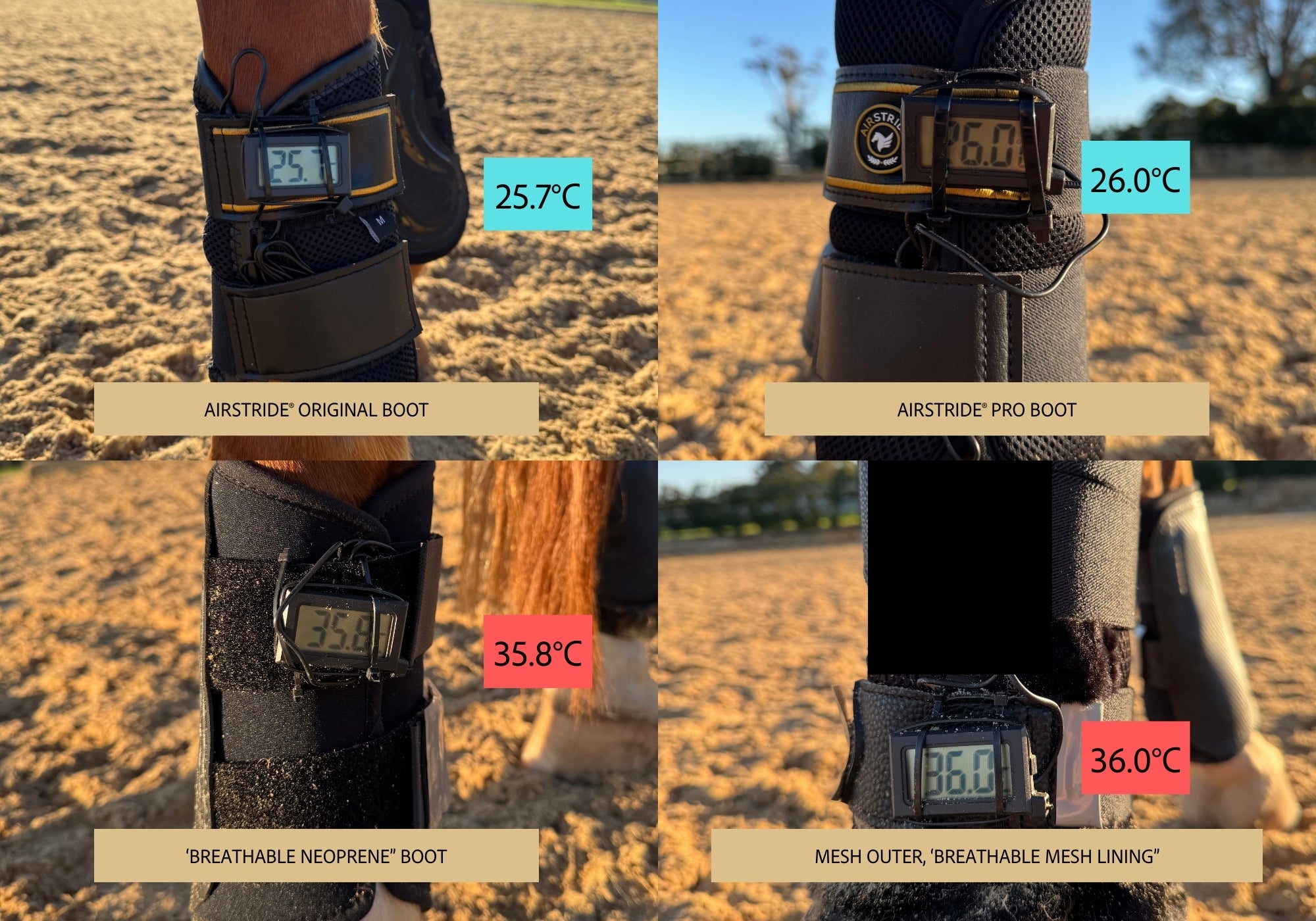
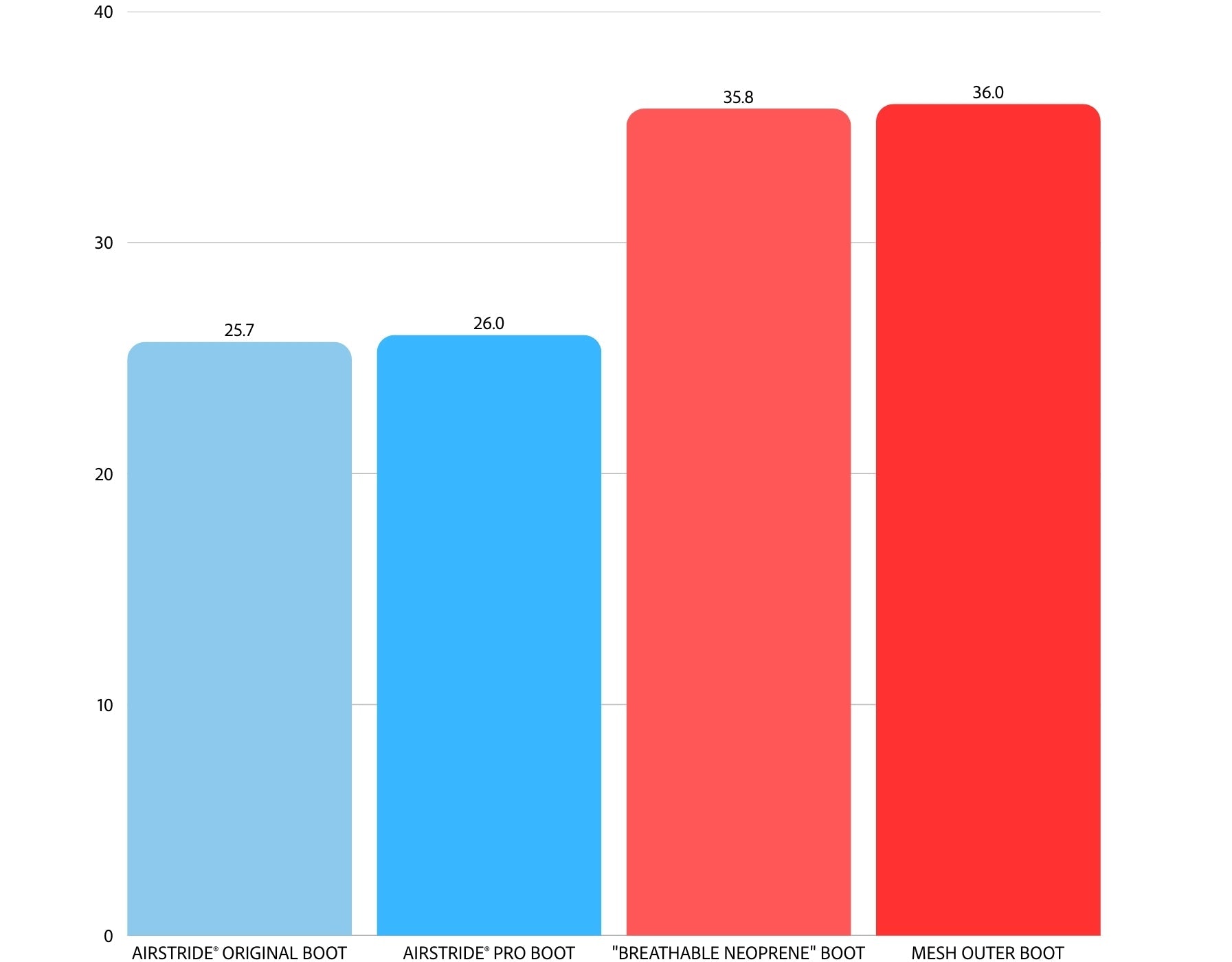
RESULTS & OBSERVATIONS
Both Airstride® boots demonstrated a drop in temperature immediately after exercise, indicating effective convection cooling.
The two comparison boots, despite being marketed as “breathable,” increased in temperature, rising well above their starting point.
INITIAL TEMPERATURES AT REST
- Airstride® Original Tendon Boot: 31.0 °C (87.8°F)
- Airstride® PRO Tendon Boot: 30.9 °C (87.6°F)
- “Breathable Neoprene” Boot: 32.0 °C (89.6°F)
- Mesh Outer with “Breathable Mesh Lining” Boot: 31.2 °C (88.2°F)
TEMPERATURES AFTER EXERCISE
- Airstride® Original Tendon Boot: 25.7 °C (78.2°F)
- Airstride® PRO Tendon Boot: 26.0 °C (78.8°F)
- “Breathable Neoprene” Boot: 35.8 °C (96.4°F)
- Mesh Outer with “Breathable Mesh Lining” Boot: 36.0 °C (96.8°F)
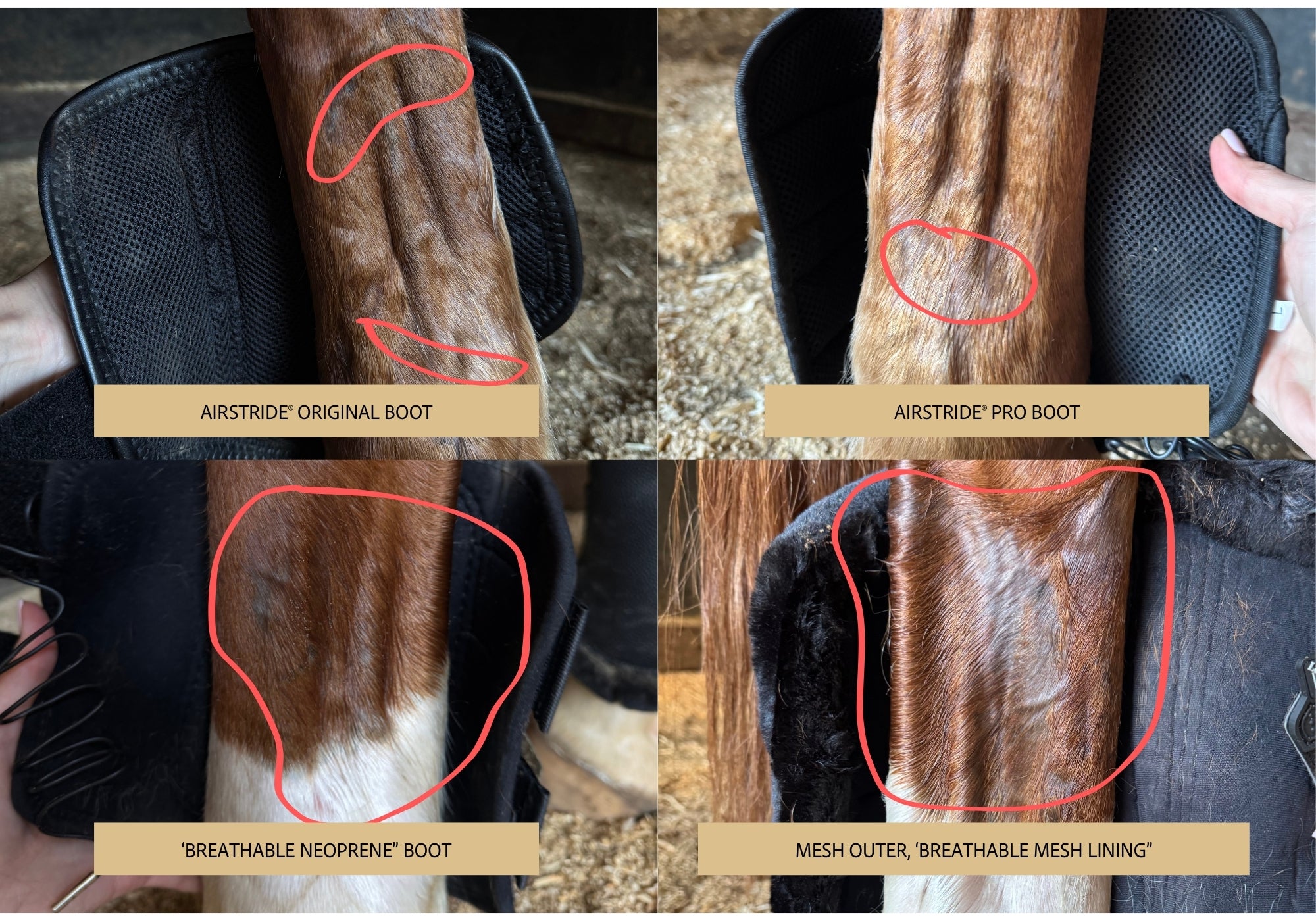
SWEAT PATTERN ANALYSIS
Airstride® Original Tendon Boot
Light sweat restricted to the shape of the leather trim.
Airstride® PRO Tendon Boot
Small, localised damp patch (approx. strawberry size).
“Breathable Neoprene” Boot
Large, visibly wet sweat patch across the measured region.
Mesh Outer with “Breathable Mesh Lining” Boot
Significant wetness across a large portion of the booted area.
CONCLUSIONS
AIRSTRIDE® AVOIDS HEAT STRESS & TENDON MICRODAMAGE
While skin warming toward 30 °C (86°F) is normal and expected, the real concern arises when boots trap heat so efficiently that surface temperatures climb into the mid-30s and beyond (91°F +). Laboratory and veterinary research has shown that tendon collagen begins to experience structural changes at 36–38 °C (96°F-100°F) (Wilson & Goodship 1994; Brock 2021). These microscopic changes (sometimes called thermal micro-damage) may not cause immediate lameness, but over time they compromise tendon elasticity and resilience, predisposing horses to strain injuries.
Our study demonstrated that Airstride® boots actively reduce heat build up through convection cooling during exercise. By contrast, the two comparison boots labelled as “breathable” trapped heat and moisture, producing elevated tendon surface temperatures and sweat saturation. This highlights how misleading fabric claims can be as airflow is restricted.
It is important to note that these measurements were taken immediately after exercise, when airflow through the Airstride® designs was still active. In the absence of convective cooling, such as during rest, it is reasonable to expect that skin temperatures under any boot may equilibrate upward toward the horse’s core body temperature.
The key distinction is that ventilation during work prevents the dangerous heat accumulation documented in other studies of neoprene, fleece, and non-porous linings (Westermann et al. 2014; Solheim 2017).
By maintaining skin temperatures within the normal safe range, Airstride® boots help protect tendons from the cumulative thermal stress that literature warns may contribute to micro-damage.
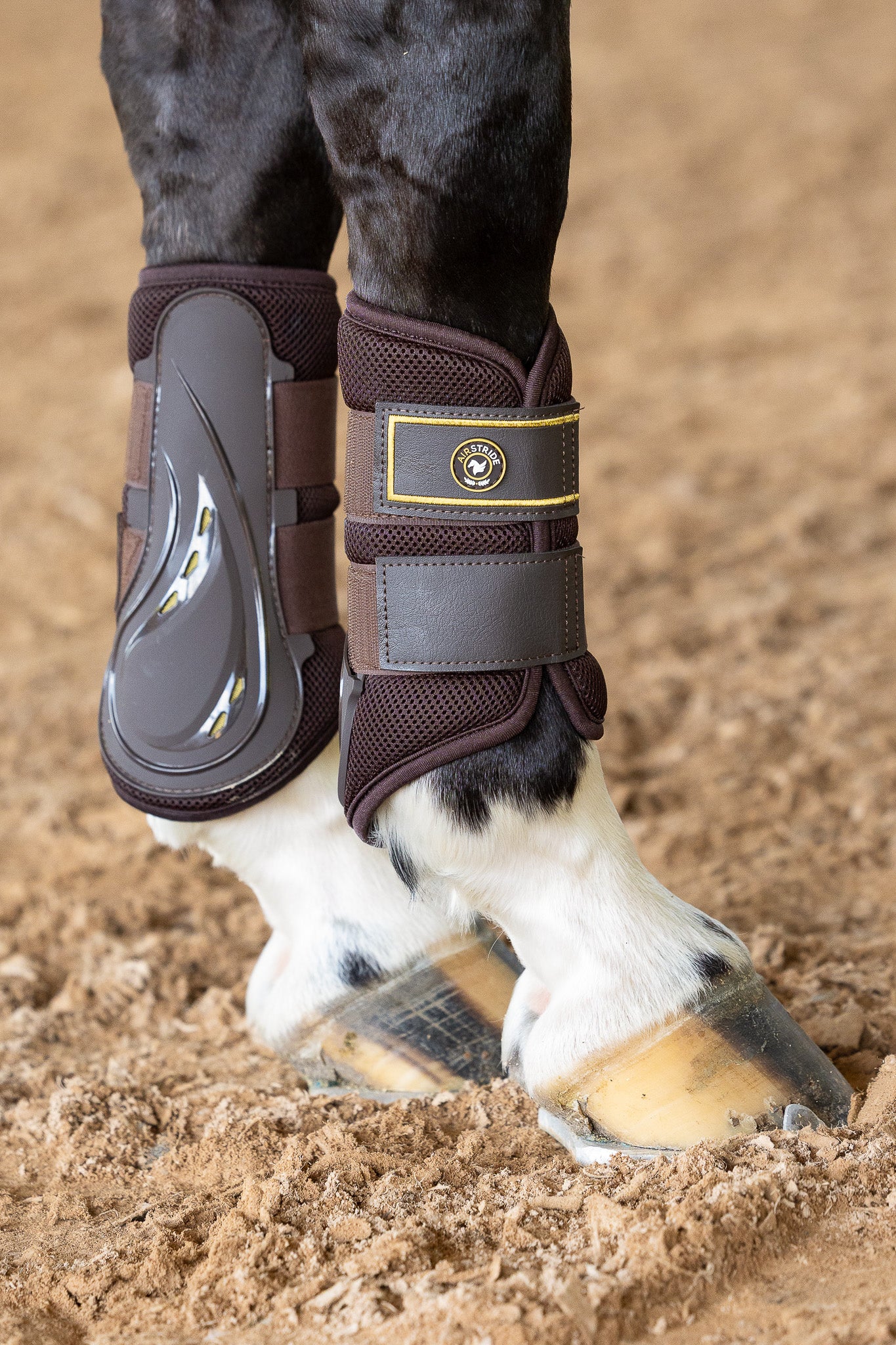
E. WALFISH - AIRSTRIDE® 2024 STUDY
"AMAZING PRODUCT... ALMOST NO HEAT ACCUMULATION'
A on-going 2024 study done by Elisa Walfish (MSc. Biology) from The Data Driven Equestrian conducted a test of Airstride® boots against a traditional fleece wrap to discuss heat accumulation under different types of leg protection during ridden work.
Results from the first series of testing:
- Airstride Boots Max Temp: 30° C
- Fleece Wrap Max Temp: 38° C
- Nearest Boot Competitor Max Temp: 34° C
Walfish found that Airstride® boots had virtually no heat accumulation and were 4 degrees cooler than the nearest boot competitor she has tested in this first round.
We look forward to sharing more detailed information as E. Walfish's testing continues.
SEE HOW AIRSTRIDE COMPARES
Discover the ultimate in cooler leg protection for your horse.
| AIRSTRIDE | OTHER BRANDS | |
|---|---|---|
| Various Protection Levels | Arriving late 2025! | |
| Zero Neoprene or Fleece | ||
| Real Airflow Your Horse Feels | ||
| Cares About Horse Welfare | ||
| Designs Based on Science | ||
| Backed By Vets |
INSPIRED BY SCIENCE
Shop the boots that truly keep their legs cool.











